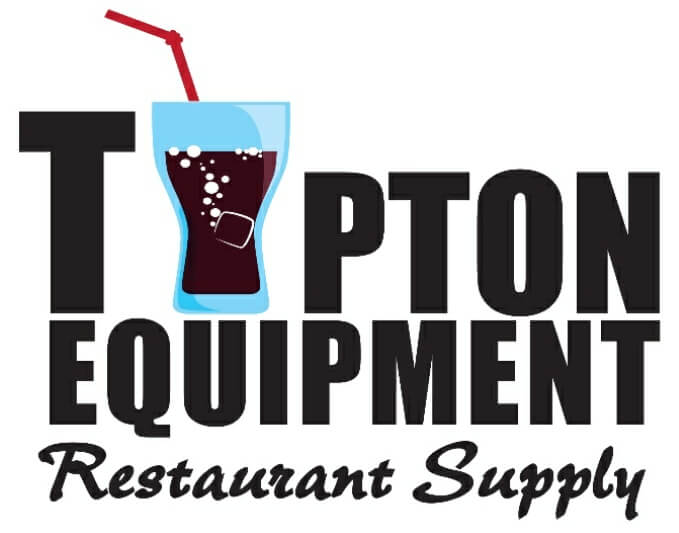New Year’s is a prime time for resolutions – and one of the most common is to eat healthier and lose weight. In fact, for 2018 45% of Americans said they wanted to lose weight or get in shape for the new year.
The new year might have you eyeing new options for your restaurant as well. In fact, with healthy eating being a key trend all year long – not just in January – what about adding a salad bar?
Take a look at the pros and cons of having a salad bar, along with the restaurant equipment you’d need to make it happen!
Benefits of a Salad Bar
Having a salad bar has a lot of benefits. It gives your customers additional options and helps you increase revenue. Diners are more health-focused than ever, and you can increase loyalty by showing that you care as well.
Many restaurants have added salads to their menus to help serve calorie and health-conscious guests, but a salad bar gives your patrons a lot more flexibility. They can choose what they like and avoid what they don’t and get a unique experience each time.
You can also win more guests if you have an option that branches beyond your traditional menu. Customers who might not have considered coming to your restaurant may choose you simply because of the salad bar. It can also help regulars who want to visit with friends who have different tastes.
Finally, you’ll appeal to those who are looking for lighter fare – not just calorie-wise but in terms of the meal overall. Not everyone is interested in the large portions common at many restaurants. Having a salad bar gives someone who’s just a bit hungry a great choice.
Salad bars give diners an engaging experience, control over their dining, and a beautiful centerpiece to look at when they come in!
Drawbacks of a Salad Bar
A salad bar requires some specialized restaurant equipment, although not as much as you’d think. It’s important to make sure that you have enough variety and that the food looks very appetizing. Folks eat with their eyes before they order!
If you want your salad bar setup to be temporary, you can use ice in the bottom of a non-refrigerated portable salad bar. If you have room for permanent restaurant equipment, you can get a tile system that’s refrigerated. Both ice and permanent equipment have benefits and costs.
With a tile or well system, you can choose a variety of pieces even if you only have a few slots. That will give you flexibility, although you don’t need more than 10 ingredients to create endless options!
The other concern is that since food is fresh and visible to everyone, it will need to be rotated and filled regularly. There may also be spills or customers who drop or break dishes. This can require extra attention from your staff and may increase your salary costs a bit.
Get the Restaurant Equipment You Need for a Salad Bar
For many restaurants, the increase in check sizes and customer appeal outweigh the concerns that may arise. A slight increase in staffing, a bit of extra training, and some new restaurant equipment are often well worth it.
The special restaurant equipment you need doesn’t have to be hard to come by – with the right Little Rock supplier, you can get everything you need. Interested in getting a quote? Contact us today!
5 Essential Buying Tips for Your Next Food Prep Work Table
The right foodservice equipment is pivotal to the efficiency of your kitchen. One of the most important types of foodservice equipment for any kitchen is the work table. With limited room on countertops available for your food prep needs, the cooking process can drag...
Tips for Keeping Your Commercial Sink Sparkling Clean
Your commercial kitchen, just like your personal kitchen, must be kept clean at all times. With all of the cooking and food processing you do, it is inevitable that your sink gets messy. Cleaning up your commercial kitchen is incomplete without proper cleaning of your...
Food-Cutting Secrets to Beautiful Dishes
In the restaurant industry, presentation is often said to be just as important as the food itself. Using the right knowledge, skills and restaurant supplies, you can incorporate creativity into your presentation, making guests feel that they are getting something...
Top Space-Saving Tips for Commercial Kitchens
Top Space-Saving Tips for Commercial Kitchens Space is always an important consideration when setting up a kitchen, and this is even truer for commercial kitchens. With a strong focus on functionality and the kitchen supplies that meet the needs of your commercial...
5 Ways to Get the Most Out of Your Mixer
No one wants to eat off of dirty or tarnished silverware. A stand mixer is a highly useful piece of kitchen equipment to invest in. Although this type of kitchen equipment does not usually come cheap, it can last a lifetime when properly cared for. Despite all your...
Restaurant Prep Tool Selection Simplified
What’s a restaurant kitchen without high-quality prep tools that can withstand the pressure of frequent use? Whether you already have a restaurant you’re running, or you’re just planning to launch one, one vital factor that could make or mar your business is how you...
Beginner’s Guide to Choosing a Commercial Ice Cream Freezer
Ice cream is a delicious and appealing desert treat for everyone, young or old. Having made the decision to sell ice cream to your customers, whether you have a restaurant, convenience store, or specialty ice cream parlor, it is time to begin stocking up on the right...
How to Choose the Right Kitchen Scales for Your Restaurant
A food scale is an essential item in every restaurant’s store of kitchen supplies. Designed to take the guesswork out of food measurement and maintain consistent food serving sizes, food scales are indispensable kitchen supplies in the commercial kitchen. With such a...
Beer Chilling Systems: Which Type Is Right for My Restaurant?
A refrigeration unit is integral to the functioning of any restaurant. Beers are best served cold - there’s no questioning that! But which beer chilling system is the best? From reach-in coolers to glycol chillers, a beer chilling system is an important piece of...
What Equipment Will I Need to run a Food Truck?
There’s a lot of planning that goes into starting your own food truck business. Before you hit the road with your delicious food offerings, you’ll need to fill up your truck with all the right foodservice equipment. Considering the lengthy list of possible items to be...
8 Types of Food Thermometers: What You Need To Know
Food thermometers are essential restaurant supplies for your commercial kitchen. They ensure that foods prepared in your commercial kitchen are cooked to the right temperature and held at that temperature for as long as necessary to kill any harmful bacteria. This...
How to Identify the Best Food Processor for Your Needs
Highly versatile and extremely efficient, food processors are designed to take away the hard work from repetitive kitchen activities. This type of cooking equipment can quickly become an invaluable tool in your kitchen. From chopping, to shredding, grinding, mincing,...
6 Keys to Choosing the Best Chafing Dishes for Your Restaurant
The chafing dish, also known as the chafer, is an essential piece of restaurant equipment for any establishment that wants to keep food hot. This type of restaurant equipment gets its name from the French word, chauffer, which means to heat, and it’s easy to see why....
Turning up the Dial on Commercial Fryers: How to Choose One for Your Restaurant
Fried food is a well-loved favorite. This is a fact. It also makes a fryer an important piece of equipment to have in your commercial kitchen. Just consider how many appetizers and sides require frying: onion rings, French fries, and fried green tomatoes are just a...
What’s in a Cooking Pot, How to Choose the Right One?
As a restaurant owner, your cooking needs might vary. Did you know that a good quality pot can greatly improve your cooking experience, while also improving the quality of your cooking? This cooking equipment is a very important one that cannot be done away with...















